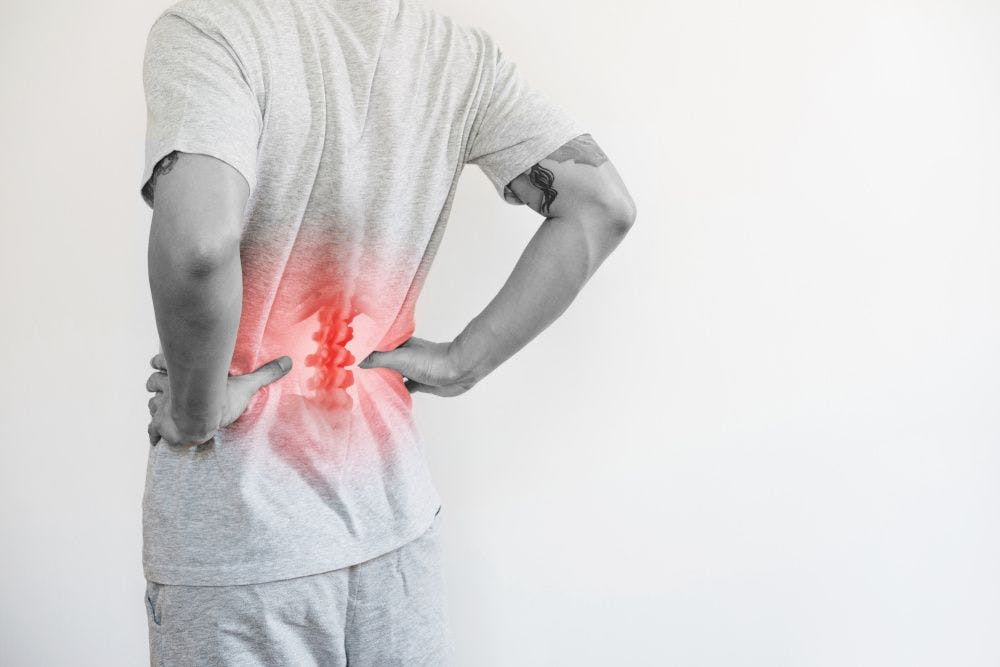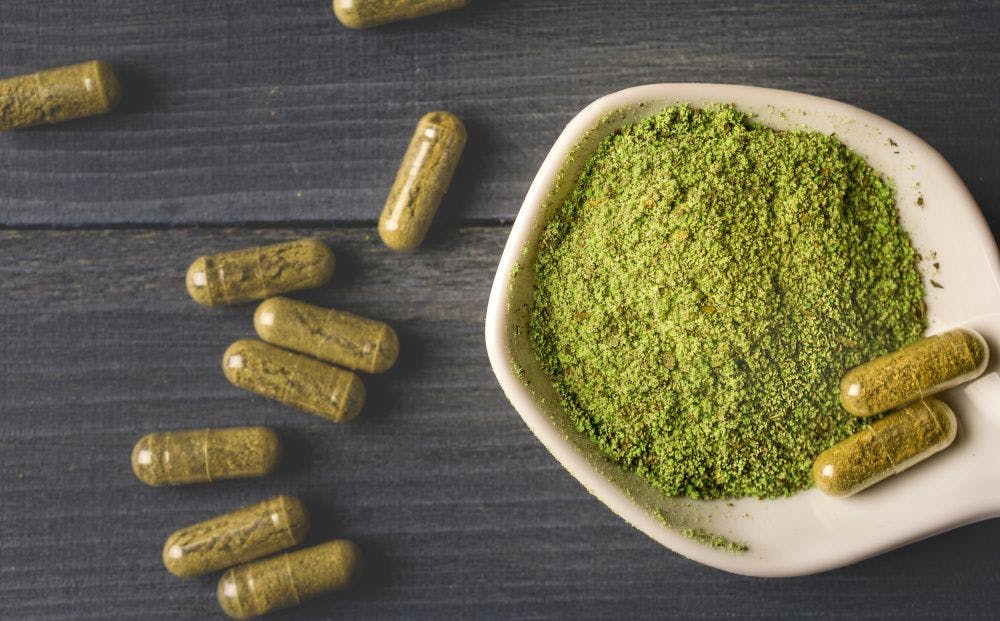The breakdown: Leveraging enzymes for better digestive-health formulations
Probiotics and prebiotics might be trending, but don’t forget about enzyme supplements, experts say.
Photo © Elena - Stock.adobe.com

Feeling slumped? Grumpy? Not quite your full self? That’s understandable. These are trying times, and perhaps we can chalk up that pervasive sense of malaise at least in part to the weight of current events.
Then again, maybe it was just your last meal. No, not that last meal; we mean the one you just ate—and, more likely than not, the one that isn’t digesting optimally.
Because: Indigestion happens. In fact, says Kalyanam Nagabhushanam, PhD, president of R&D, Sabinsa Corp. (East Windsor, NJ), “Indigestion is all too common and takes a major toll on one’s health and wellbeing. Stomach disturbances invariably change the disposition of any individual, affecting mood, appearance, posture, and performance in the most palpable way.”
The upshot: Poor digestion is a holistic concern begging for a holistic solution. And though pre- and probiotics have earned a reputation—and serious sales—as the alpha and omega of digestive-health holism, they don’t quite complete the circle. For that, industry insiders say, you need enzymes.
Or, as Nagabhushanam puts it, “A thoughtfully formulated blend of enzymes can address digestive concerns in a holistic way.” And in so doing, it can be an effective tool for formulating the next generation of digestive-health supplements.
Gut Feelings
“There’s no gainsaying that the consumption of good food followed by good digestion is a natural, inborn pleasure for every human,” Nagabhushanam declares. That being so, “Biological imperfections that hamper that enjoyment are unwelcome, making the factors that contribute to good digestion among people’s top health considerations.”
The numbers prove him right. A Nutrition Business Journal consumer survey conducted earlier this year found 27% of respondents rating gut health among their top experiential concerns.1
And whether it’s a cruel irony or a logical conclusion, those same gut-health concerns are also occurring more frequently: A 2020 Mintel survey found not only that 72% of adults experienced digestive discomfort at some point during the previous twelve months, but that 25% reported suffering more such flare-ups since the pandemic started.
Hot Topic
So with digestive wellness—or its absence—an inescapable reality, it’s no wonder that Straits Research appraised the global market for digestive-health products at just shy of $40 billion in 2021—and destined to hit $80 billion by 2030, buoyed by compound annual growth of 8%.2
After all, says Mark Walin, senior vice president of business development and marketing, Bio-Cat (Troy, VA), “We typically eat two to three meals per day and are constantly getting feedback on how well—or not—our digestive system is functioning. So especially during a pandemic when self-care initiatives peaked, interest in the gut and diet has increased consumer understanding and led to the topic’s being ‘hot.’”
Beyond that, Walin credits “new and increasingly affordable technologies for characterizing our gut microbiomes” with generating a “flood” of knowledge about the relationship between our guts and our health—which has helped reveal not only the extent of our gut issues, but their causes, as well.
Not Just Nutritional
Like, for example, modern life. “It’s undeniable that our lifestyles contribute to stomach upset and digestive disturbances,” states Kristin Wilhoyte, global director of product marketing, Deerland Probiotics & Enzymes (Kennesaw, GA). “From convenience foods and meals that lack beneficial bacteria to heightened stress and inadequate sleep, our bodies often struggle to keep up.”
And the struggle intensifies as we grow older. When FMCG Gurus quizzed North American consumers on supplement trends, it found 55% of baby boomers willing to pay extra for supplements that address digestive health3—a finding that “may align with the common experience of bloating and constipation among aging consumers,” Wilhoyte notes.
“That’s not to say that GI discomfort doesn’t affect other population segments,” she continues, pointing to advertising campaigns that target young women with bowel irregularity or constipation as evidence. Children’s gut health is even “a growing trend,” she adds, “as many kids experience constipation and other digestive discomforts.”
Poor diets certainly exacerbate these discomforts, but even good nutrition can make matters worse. Take flexitarianism. Although adding more plants to our meals is healthful, “The human body doesn’t produce the enzymes that break down the components of plant cell walls,” Wilhoyte explains, “possibly causing digestive discomfort in some consumers, but also hinting that we may be missing out on the key nutrients these veggies offer.”
The lesson Walin draws is that while “nutrition sounds easy enough,” it doesn’t “solve” digestive health issues on its own. But supplementation with strategically chosen and carefully formulated enzymes “can be a solution to some of these digestive-health challenges and is critical for healthy digestion,” he says.
Enzymes in Action
The reasons lie in our own biology. As Wilhoyte explains, “As soon as food enters the mouth, our bodies launch an enzymatic cascade. Each enzyme has its own target: Lactase breaks down the lactose in dairy, amylase breaks down carbohydrates, lipase breaks down fats, and proteases break down proteins. Other enzymes lend a hand, but all work in concert to catalyze the reactions that extract nutrients as raw materials for the body’s functions.”
Supplementing with exogenous enzymes “can amplify these endogenous enzymes’ effectiveness so that they boost digestive health,” Walin adds.
This comes in especially handily when the body can’t produce important enzymes on its own, or produces them in such limited quantities as to be ineffective—as can be the case with lactose intolerance, or our inability to make those aforementioned enzymes that break down plant cell walls.
Another advantage of enzymes is that they act fast, Walin continues, yielding almost-immediate relief in some cases, “whereas probiotics work best with continuous supplementation.”
Ready to Shine
That being the case, Walin believes enzymes “clearly deserve as much attention as pre- and probiotics, given their established role in the human body.” And the fact that they haven’t gotten it suggests to him that some good PR may be in order.
After all, thanks to what he calls “a probiotic marketing and research surge over the past 20 years,” the mere term probiotic has become “an excellent, consumer-friendly way to communicate the benefits of what people are consuming,” he says.
With far less marketing and education support, “Enzymes haven’t had a chance to make their name sound as consumer-friendly,” he argues. “And because of that, there’s less awareness. So just as wellness brands have made a name for probiotics, they can—and should—focus on how enzymes are as beneficial.”
Partners in Chyme
As for how they might do that, “Product concepts should help educate consumers on enzymes’ digestive importance,” Walin advises, “which, in turn, will allow companies to strengthen and even broaden their product pipelines.”
And this needn’t be a zero-sum game: “Probiotics help the digestive system maintain balance over weeks and months,” he points out, “while enzymes break down food into nutrients following one dose. Therefore both are necessary for a complete digestive-health portfolio.”
Others in the sector agree. Srikanth Ineedi, senior marketing manager of dietary supplement/gut health, health, nutrition and care, DSM North America (Parsippany, NJ), notes that because enzymes work at relatively small doses by weight, they fit well into “a wide variety of dosage forms, such as capsules, tablets, and powders.”
And Wilhoyte advocates for leveraging “the immense popularity of probiotics” to introduce enzymes—“digestive powerhouses,” as she calls them—“to the masses, with prebiotics, probiotics, postbiotics, synbiotics, and enzymes sharing the stage as partners in chyme.”
Building Blends
Suppliers are already setting that stage, with blends like Sabinsa’s DigeZyme covering all the major enzyme bases.
Designed to match “the various aspects of food consumption and the factors that contribute to indigestion,” Nagabhushanam explains, the blend comprises an alpha-amylase and cellulase to supplement our insufficient breakdown of carbohydrates; a lactase to ameliorate the effects of lactose intolerance; a protease to manage protein digestion; and a lipase “to break down the oil and fat portions of ingested food into simple components.” Thus, he concludes, “The five enzymes in DigeZyme comprehensively address all the issues causing indigestion.”
But blends can get more granular, targeting specific digestive issues—like gluten intolerance.
As Wilhoyte notes, enzyme blends like Deerland’s Glutalytic targets gluten’s internal and external peptide bonds, breaking down the protein faster and more efficiently than traditional dipeptidyl peptidase-4 supplements and providing relief for the roughly 6% of the population who experience non-celiac gluten sensitivity (NCGS).
In fact, “Numerous in vitro studies, plus two separate human clinical studies,4,5 have shown its ability to break down gluten proteins, supporting a reduction in the frequency and severity of factors associated with gluten sensitivity,” Wilhoyte says. Clinical evidence5 also shows that the blend lowers levels of immunoglobulin A and C-reactive protein, “which may support a proper immune response to the consumption of gluten-containing foods,” she adds.
And Ineedi notes that DSM’s Tolerase G is a prolyl endopeptidase that can help break down residual gluten in the diet, “and it’s been clinically proven to support gluten digestion in subjects with NCGS at a dose of 80,000 PPI,” he says.
Dealing with Dairy
Like NCGS, lactose intolerance is another common enzyme-driven condition, affecting about 70% of the public, Ineedi says.
And with insufficient lactase to blame, Ineedi offers DSM’s Tolerase L lactase as a solution. “Lactase’s efficiency in digesting lactose has been confirmed through more than a dozen human clinical studies,” he says, “and the European Food Safety Authority has even authorized a health claim regarding the same, with a recommended dose of 4,500 ALU, or acid lactase units.” Because Tolerase L maintains maximum activity even at the stomach’s low pH, he adds, it’s a solid candidate for supplement formulations.
But lactase isn’t the only enzyme that helps consumers deal with dairy.
Wilhoyte notes that Deerland’s Dairylytic blend comprises both lactase and protease enzymes that work in tandem to break down lactose and “make milk proteins that could cause an immune response easier to digest and absorb,” she says. Under in vitro conditions that simulate human physiology, it efficiently breaks down lactose over a 90-minute interval, with gel electrophoresis testing demonstrating superior dairy protein digestion, she says.
From Strength to Strength
Dairy-derived whey proteins are actually quite popular with athletes for boosting muscle growth and strength. And as Wilhoyte notes, “Whey should ideally be digested to at least the tetra-peptide level within 90 minutes for the body to use it to help promote muscle growth and strength.”
But whey can be “somewhat cumbersome” to digest, she continues, as the proteins are typically bound in a “peptide complex” that requires breakdown for effective liberation and assimilation of amino acids.
Thus she recommends Deerland’s ProHydrolase enzyme ingredient for helping to predigest protein, “allowing for the release of the full complement of essential amino acids to support muscle building and recovery6,” she says.
Cutting Carbs
And returning to the plant kingdom, Sean Garvey, director of R&D at Bio-Cat, notes that the growth of plant-based eating has put a premium on “enzymes that unlock plant nutrition with less gas and stomach upset.”
Alpha-galactosidase, for example, attacks the long chains of galactose called galactans that are notorious for producing excess flatulence after consuming, say, legumes. Three hundred to 1,200 GalU of this carbohydrase per meal “has proven effective at reducing gastrointestinal symptoms in clinical studies,” Garvey says.
“Other carbohydrases that assist plant digestion include cellulose, hemicellulose, xylanase, pectinase, and inulinase,” Garvey continues, adding that supplementation with exogenous enzymes can also support the enzymes that our gut microbiomes churn out.
In fact, Bio-Cat is “particularly excited” about a class of carbohydrases that our bodies don’t make—but that our gut microbes do—that “help break down certain plant fibers associated with gastrointestinal intolerance, and that serve as fuel for healthy gut bacteria.”
Even better, he says, supplemental enzymes from microbes work just as well in stomach acid as under the less-acidic conditions in the intestine—which means they’re more likely to work when consumers take them. And as far as Wilhoyte’s concerned, that benefits both consumers and the industry.
“The great thing about enzymes is that they’re experiential,” she says. “Most consumers are aware immediately of an enzyme supplement’s effects when they take it with a meal that would usually cause gas, bloating, or other digestive discomforts. Then those happy consumers tell their friends, coworkers, and families, and the groundswell begins.”
References
- From Nutrition Business Journal consumer survey. Powered by the Suzy survey platform. N= 1062. Responses collected week of June 10, 2022. Question: “Do you regularly experience any of the following issues? Please select all that apply.”
- Straits Research report. “Digestive Health Products Market: Information by Ingredient (Prebiotics, Probiotics, Food Enzymes), Product (Dairy Products, Non-Alcoholic Beverages), and Region—Forecast Till 2030.” Published May 27, 2022.
- FMCG Gurus survey. “Nutritional Supplement Trends by Cohort—North America.” August 2021.
- Maher M et al. “A Glutalytic enzyme supplement was tolerated by healthy young adults.” Food and Nutrition Sciences, vol. 9, no. 2 (January 2018): 99-104
- Deaton J et al. “Tolerance and efficacy of Glutalytic: A randomized, double-blind, placebo-controlled study.” Journal of Nutrition & Food Sciences, vol. 8, no. 5 (January 2018)
- Townsend JR et al. “The effect of ProHydrolase on the amino acid and intramuscular anabolic signaling response to resistance exercise in trained males.” Sports (Basel), vol. 8, no. 2 (January 22, 2020): 13

Prinova acquires Aplinova to further increase its footprint in Latin America
April 7th 2025Prinova has recently announced the acquisition of Brazilian ingredients distributor Aplinova, which is a provider of specialty ingredients for a range of market segments that include food, beverage, supplements, and personal care.




















